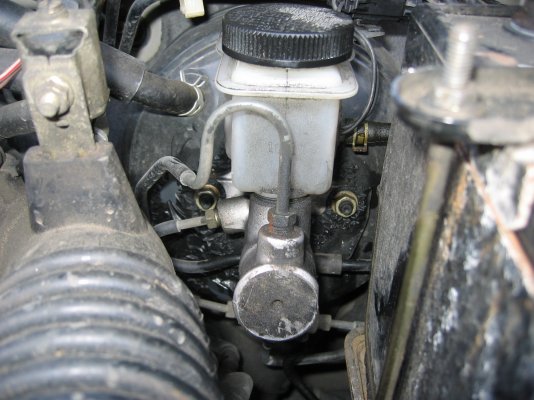Took DW's car (early 2000's Mazda w/ 115k miles) for state inspection and they said they couldn't pass it because the master cylinder was leaking. Opened it up at home and saw that brake fluid had eaten off the paint on the power booster (attached photo). However, the master cylinder was still full of fluid, and DW said it hasn't had any loss of power while braking. The car had the oil changed last month with one of the free inspections/fluid checks that they usually do and they didn't mention anything.
My question is, how definite is it that the master cylinder needs to be replaced? I'm thinking it's possible that they "topped up" my brake cylinder at the last oil change and spilled some, overfilled it, or didn't put the cap on tight enough, and this is what ate the paint. I couldn't find an active leak, but there seemed to me moisture around the cap. If the leak were coming from the back, it seems like the top of the plastic tank would've been dry. Can the dealership do some kind of pressure test on the tank's integrity or are they just going to say "oh you gotta replace that, $300 please"?
The second question is, now that the paint on the booster has been eaten, does it need to be repainted/replaced as well? We might keep this car another year or two at most so I'm not looking to make investments to keep driving it for 10 years.
Thanks for any advice.
My question is, how definite is it that the master cylinder needs to be replaced? I'm thinking it's possible that they "topped up" my brake cylinder at the last oil change and spilled some, overfilled it, or didn't put the cap on tight enough, and this is what ate the paint. I couldn't find an active leak, but there seemed to me moisture around the cap. If the leak were coming from the back, it seems like the top of the plastic tank would've been dry. Can the dealership do some kind of pressure test on the tank's integrity or are they just going to say "oh you gotta replace that, $300 please"?
The second question is, now that the paint on the booster has been eaten, does it need to be repainted/replaced as well? We might keep this car another year or two at most so I'm not looking to make investments to keep driving it for 10 years.
Thanks for any advice.

